Canis Minor is a small constellation located in the northern celestial hemisphere. The name comes from Latin, and it translates to the “Lesser Dog”, in contrast to Canis Major, the “Greater Dog” – both celestial dogs are commonly represented as following the constellation of Orion, the celestial hunter.
Key Facts & Summary
- Canis Minor was at first cataloged by the Greco-Roman astronomer Ptolemy, as an asterism, in his 2nd century Almagest, that was comprised out of 48 constellations.
- Canis Minor would later be included in the 88 modern constellations, where it holds the 71st place in regards to size, stretching for around 183 square degrees.
- The constellation of Canis Minor doesn’t host any Messier objects, however, unlike its prominent brother, Canis Major, the smaller constellation is associated with a meteor shower – the Canis Minorids.
- Currently, two stars in Canis Minor has been discovered to host planets, HD 66141, and Luyten’s Star.
- The brightest star in Canis Minor is Procyon, which has an apparent magnitude of 0.34, usually being the eighth brightest star in the night sky.
- Procyon is a binary star system, consisting of a white main-sequence primary star, and a fainter white dwarf companion.
- Only two stars are brighter than magnitude 4 in Canis Minor, they are Procyon, and the second brightest star in the constellation, Gomeisa.
- Gomeisa has an apparent magnitude of 2.84, it is a blue-white main-sequence star.
- Though the Milky Way passes through much of Canis Minor, there are relatively few deep-sky objects located here.
- Some of the deep-sky objects in Canis Minor are the star groups NGC 2459, NGC 2394, the lenticular galaxy NGC 2508, a pair of near-adjacent galaxies NGC 2402, the spiral galaxy NGC 2485, or the Abell 24 nebula.
- One of the nearest star systems to Earth is located in Canis Minor, Luyten’s Star, which is situated at only 12.36 light-years away.
The constellation of Canis Minor is strongly associated with the classical Greek uranographic tradition, however, Canis Minor’s origins can be traced back to ancient Mesopotamia.
The brightest stars in Canis Minor, Procyon, and Gomeisa were called MASH.TAB.BA or the “twins” in the Three Stars Each tablet, that date to around 1100 BC. The stars were later associated with the deities Lulal and Latarak, in the Babylonian mythos.
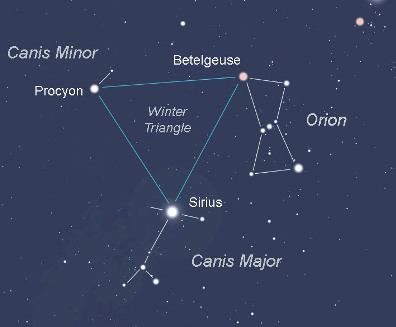
In Greek mythos, the constellation of Canis Minor was related to the Teumessian Fox, a beast turned into stone together with its hunter, Laelaps, by Zeus.
Zeus later placed them into the sky as Canis Major (Laelaps) and Canis Minor (Teumessian Fox). Others associated Canis Minor with the Lesser Dog following Orion, the celestial hunter.
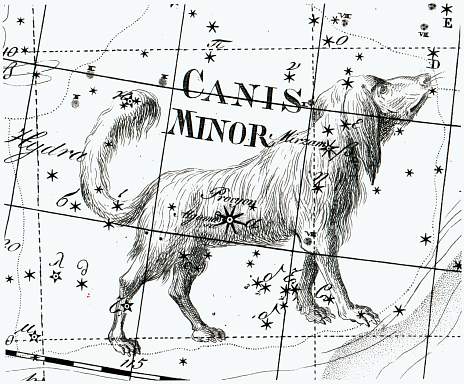
Location
The constellation of Canis Minor is the 71st largest constellation in the sky. Canis Minor spreads for over 183 square degrees. Canis Minor is located in the second quadrant of the northern hemisphere (NQ2), and can be seen at latitudes +90o and -75o.
- Right Ascension: 07h 06.4m to 08h 11.4m
- Declination: 13.22o to -0.36o
- Visible: +90o and -75o
- Best viewed: at 21:00 ( 9 p.m. ) during March
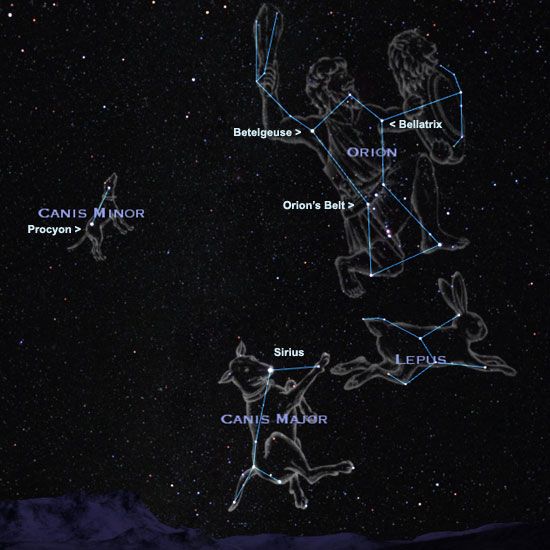
The neighboring constellations of Canis Minor are Cancer, Gemini, Hydra, and Monoceros. Canis Minor belongs to the Orion family of constellations together with Canis Major, Lepus, Monoceros, and Orion.
Notable Stars
Only two stars are brighter than magnitude 4 in Canis Minor. They are the main-sequence stars Procyon, which is the brightest star in the constellation with an apparent magnitude of 0.34, and Gomeisa 2.84. Several interesting stars are located in Canis Minor, including:
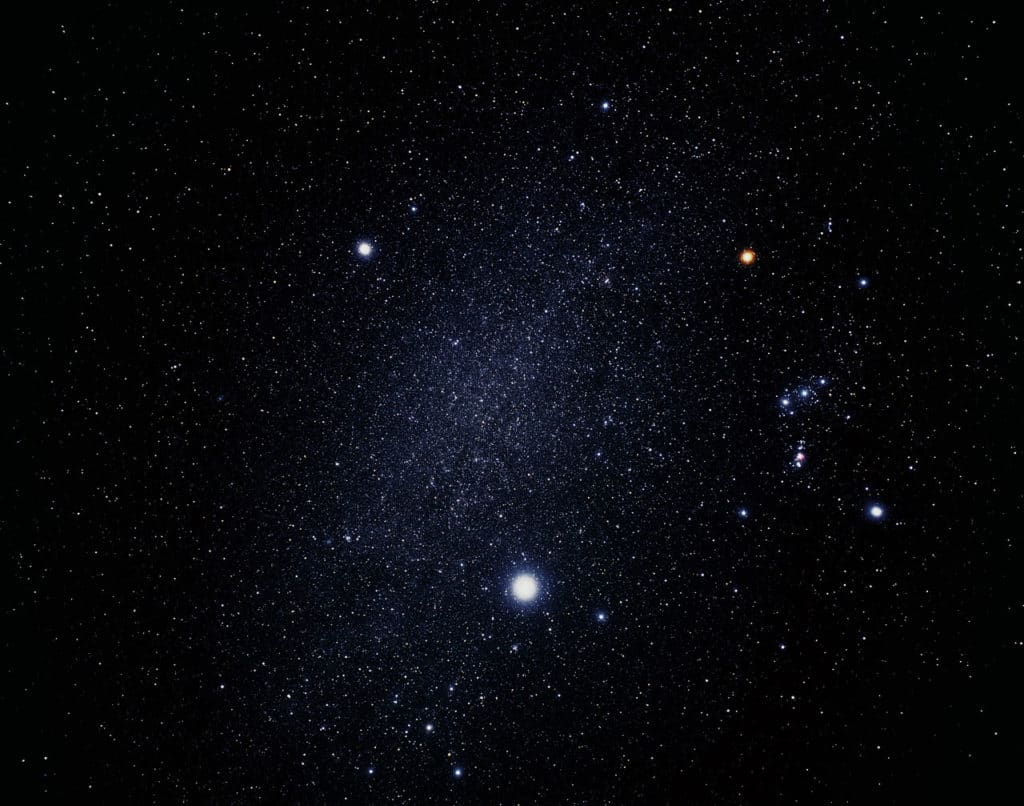
Procyon
Procyon, also designated as Alpha Canis Minoris, is the brightest star in Canis Minor, and overall the eighth brightest star in the night sky, being 6.93 times brighter than the Sun.
Procyon is a binary star system, consisting of the primary star, Procyon A, which is a white-hued main-sequence star, and Procyon B, a fainter white dwarf.
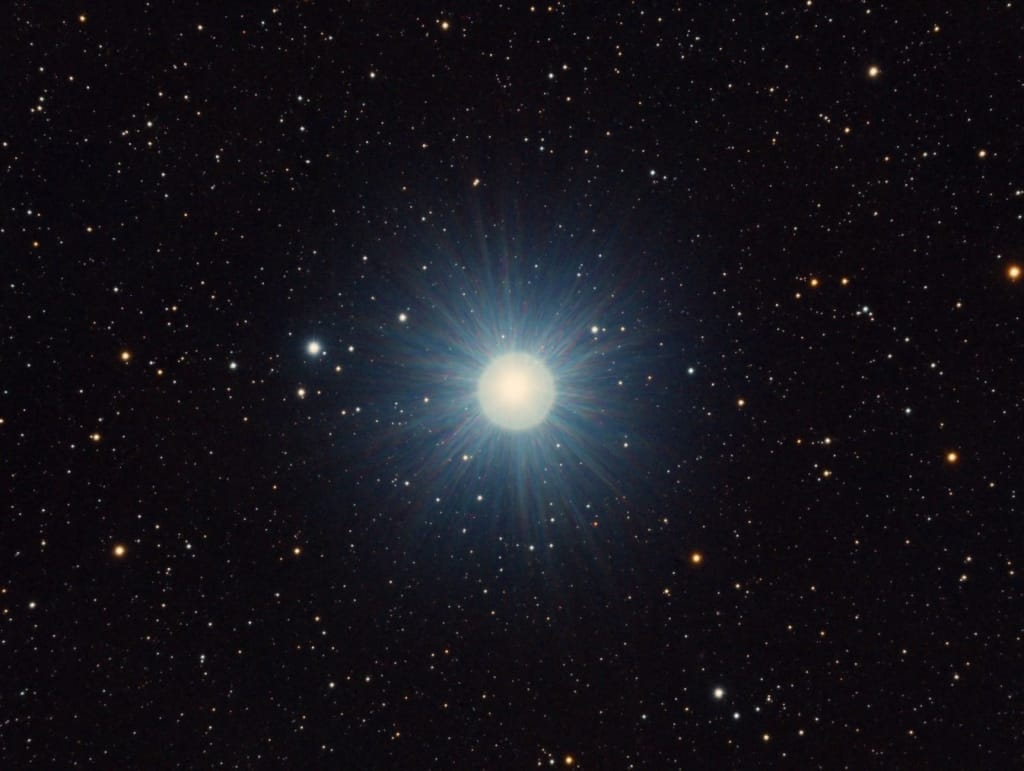
The primary star, Procyon A, has 149% of the Sun’s mass, 204% of its radius, and it is hotter than our Sun, having temperatures of around 6,530 K.
Procyon B, the companion star, has only 60% of our Sun’s mass, 0.01% of its radius, and it is also hotter, at 7,740 K. The Procyon star system is located at only 11.46 light-years away from us, being one of the closest star systems to our Solar System.

Gomeisa
Gomeisa, designated as Beta Canis Minoris, is the second-brightest star in Canis Minor, located at around 160 light-years away. Gomeisa has an apparent magnitude of 2.84, being 195 times brighter than our Sun.
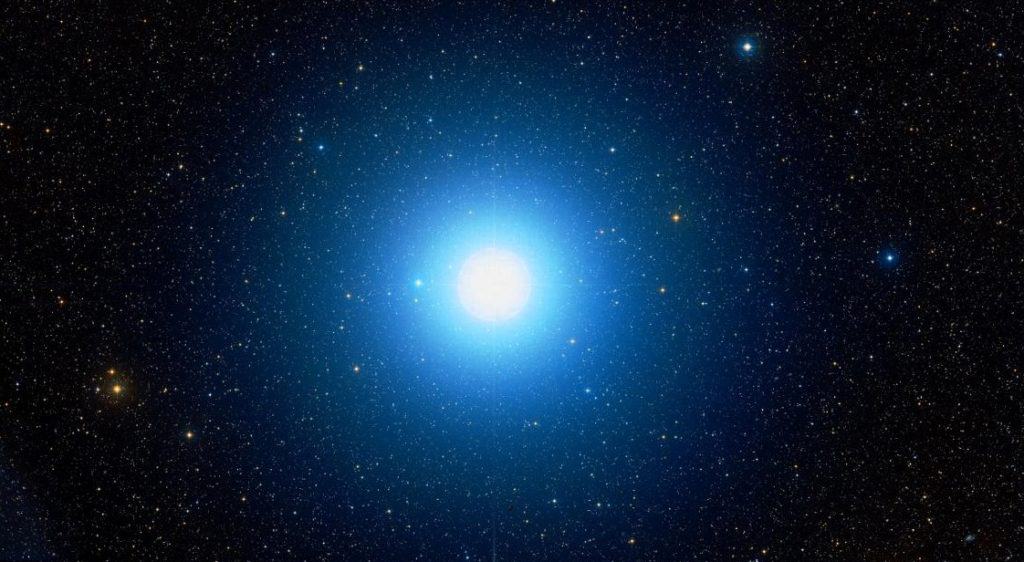
Gomeisa has around 350% of our Sun’s mass, 350% of its radius, and it is twice as hot, having temperatures of around 11,772 K. The star is also a fast spinner having a rotational velocity of around 210 km / 130.4 mi per second.
Gamma Canis Minoris
Gamma Canis Minoris is a binary star system located at around 320 light-years away from us. It has an apparent magnitude of +4.33. The two stars of this system are both evolved K-type stars.
The primary star is 321 times brighter than our Sun, having 188% of its mass, 3,680% of its radius, yet it is cooler with temperatures of around 4,036 K.
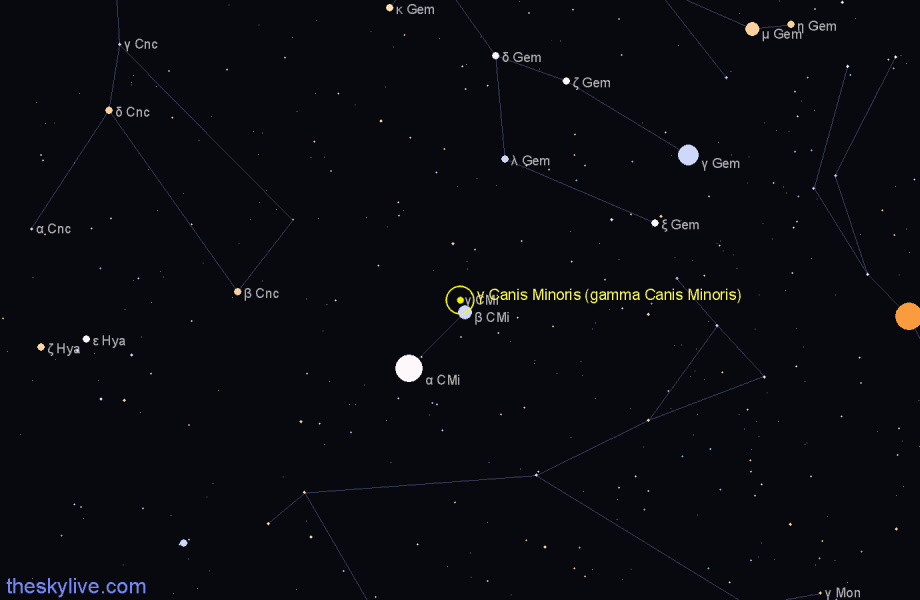
The secondary star is 25 times brighter than our Sun, having 185% of its mass, 780% of its radius, and it is also cooler than our Sun, with temperatures at around 4,658 K.
Luyten’s Star
Luyten’s Star is a red dwarf located at around 12.36 light-years away from Earth. The star is named after astronomer Willem Jacob Luyten who determined the star’s high proper motion in 1935.
Luyten’s star has an apparent magnitude of 9.8. It is much smaller than our Sun, having only 26% of its mass, 35% of its radius, and it is also cooler, with only 3,150 K surface temperatures.
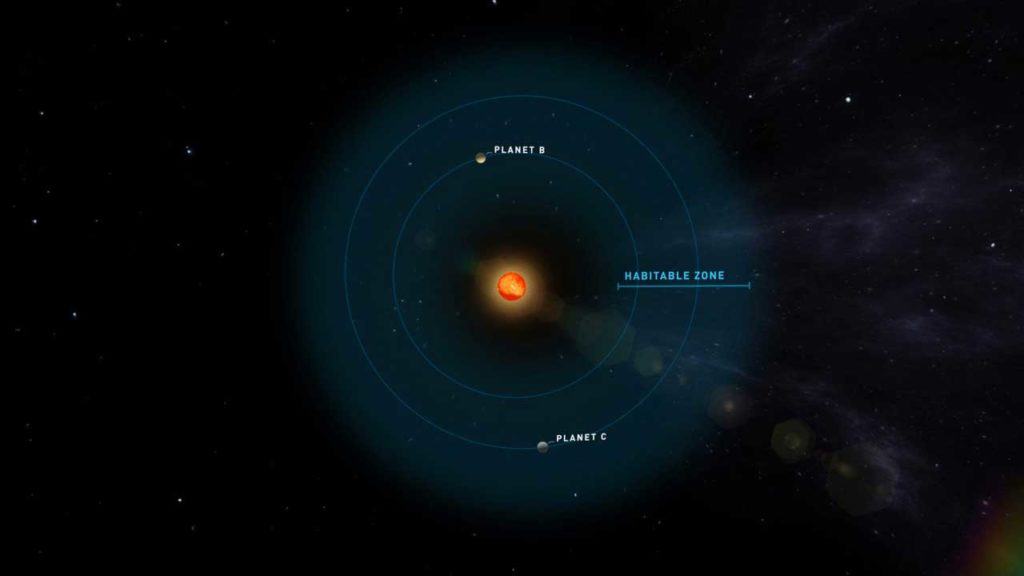
Around four planets have been discovered orbiting Luyten’s Star. The outer planet, GJ 273b is a Super-Earth planet located in the star’s habitable zone. The inner planet GJ 273c is one of the lightest exoplanets ever discovered.
The other two are still being observed to have their properties deciphered. In 2017, a project by METI and Sonar sent a series of radio signals towards Luyten’s star, if anyone is listening a response could be expected to happen only in 2036.
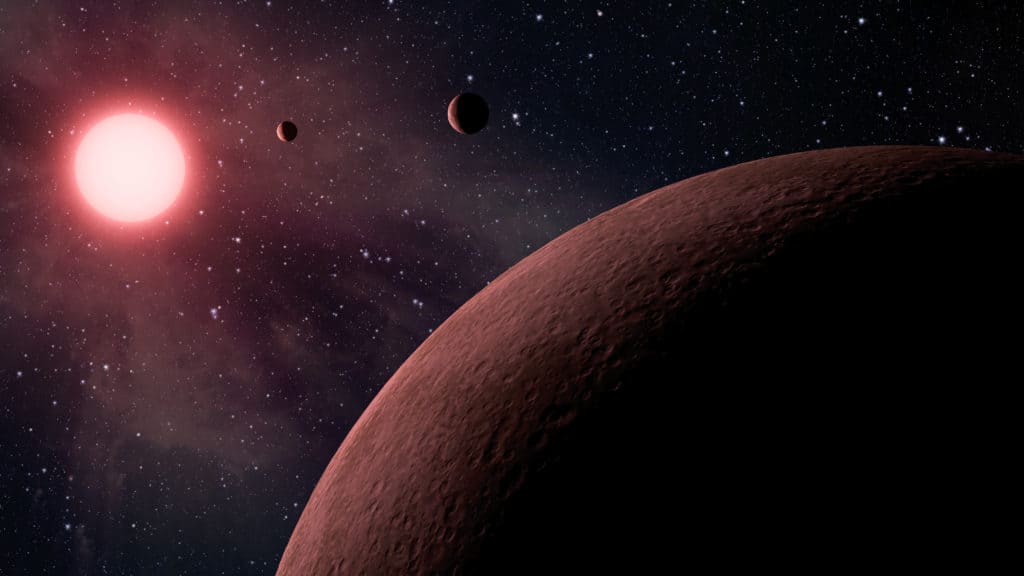
Epsilon Canis Minoris
Epsilon Canis Minoris is an evolved G-type bright giant star located at around 770 light-years away from us. It has an apparent magnitude of 5, and it is a suspected binary star system.
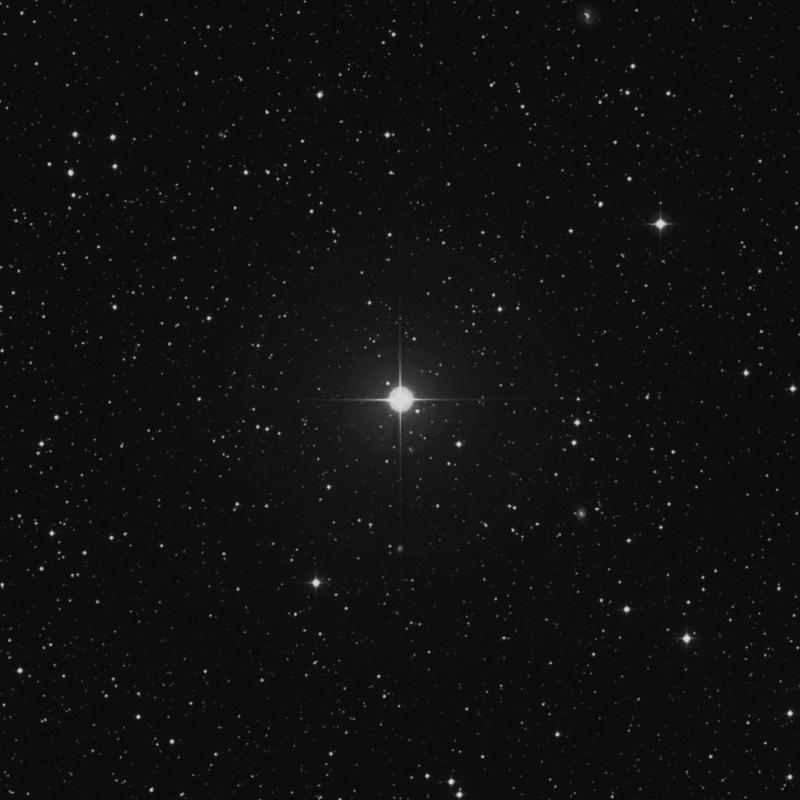
Epsilon Canis Minoris has around 463% of our Sun’s mass, 455% of its radius, and it is 1,086 times brighter, yet cooler than our Sun, having surface temperatures of around 4,916 K.
Eta Canis Minoris
Eta Canis Minoris is a binary star comprised out of a yellow-white F-type giant star and an eleventh magnitude star. The system has an apparent magnitude of 5.25.
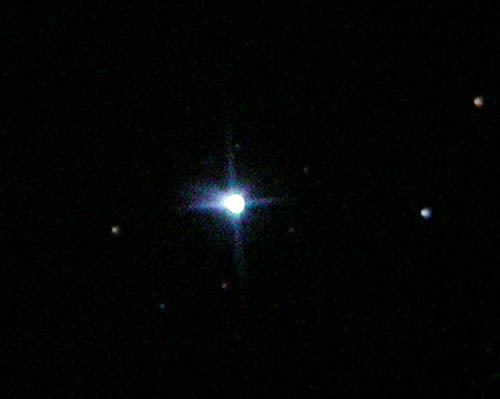
The two stars are separated from each other by around 4 arcseconds, and it takes 4,000 years for the companion star to orbit the primary. The primary star, Eta Canis Minoris, has around 216% of our Sun’s mass, 5,750% of its radius, and it is 57.5 times brighter than our Sun.
Delta Canis Minoris
Delta Canis Minoris is actually the designated given to three separate stars, Delta1, Delta2, and Delta3 Canis Minoris. Delta1 Canis Minoris is an F-type main-sequence yellow-white-hued star located at around 760 light-years away.
Delta1 Canis Minoris has an apparent magnitude of +5.25, and it is 319 times brighter than our Sun. Delta2 Canis Minoris is also an F-type main-sequence star, however, it is located at 141 light-years away.
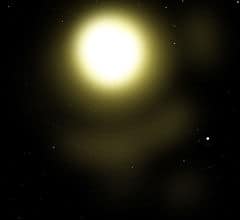
Delta2 Canis Minoris has an apparent magnitude of 5.589, it is 10 times brighter than our Sun, having 163% of its mass, 185% of its radius, and is a fast spinner with a rotational velocity of 113 km / 70.2 mi per second.
Delta3 Canis Minoris is a B-type main-sequence white-hued star located at around 730 light-years away. It has an apparent magnitude of +5.81, being 175 times brighter than our Sun.
Delta3 Canis Minoris has around 316% of our Sun’s mass, 210% of its radius, and it is much hotter with surface temperatures at 9,908 K. It is also a fast-spinning star with a rotational velocity of around 259 km / 160.9 mi per second.
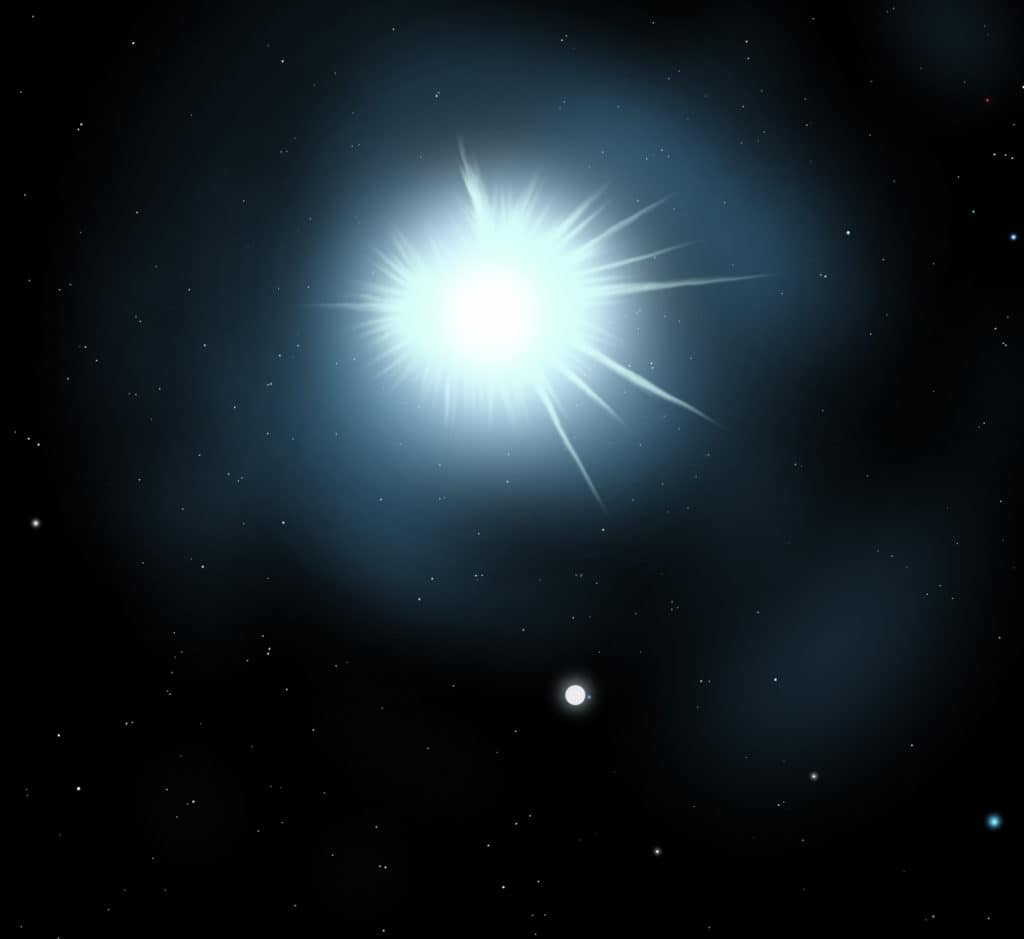
Zeta Canis Minoris
Zeta Canis Minoris is a blue-white B-type bright giant star located at around 620 light-years away. Zeta has an apparent magnitude of 5.13, and it is also classified as a Mercury-Manganese star, having an overabundance of these elements in its spectrum.
Zeta Canis Minoris is 490 times brighter than our Sun, having 398% of its mass, and it is more than twice as hot with temperatures peaking at 13,500 K.
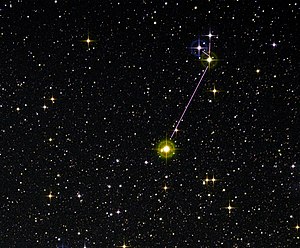
HD 66141
HD 66141 is an orange K-type giant star located at around 222 light-years away from us. It has an apparent magnitude of +4.39, being 174 times brighter than our Sun.
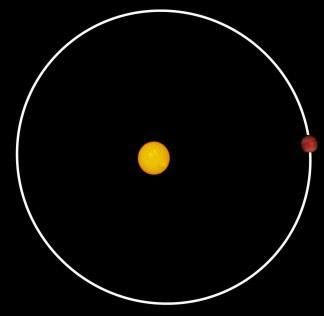
HD 66141 has around 110% of our Sun’s mass, 2,140% of its radius, and it also has one discovered planet orbiting around it. This star is cooler than our Sun, having temperatures of around 4,305 K.
BC Canis Minoris
BC Canis Minoris is a reddish variable star with an apparent visual magnitude that fluctuates around 6.30. It is located at around 520 light-years away from us.
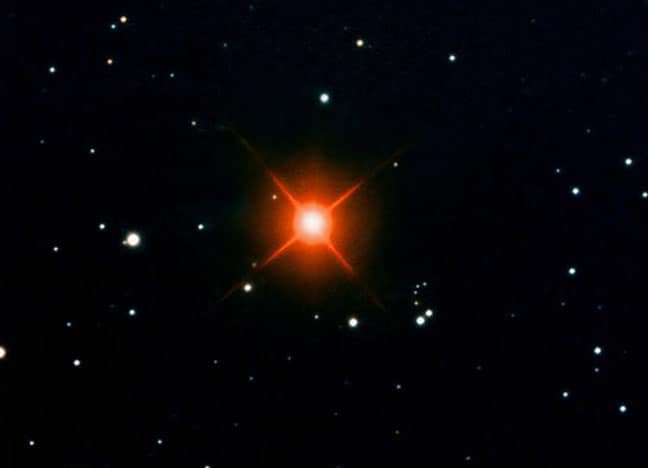
BC Canis Minoris is moving closer to us, it is an aging red giant star that is 496.7 times brighter than our Sun, having 6,040% of its radius, yet cooler, at only 3,507 K.
Deep-sky Objects
Though the Milky Way passes through much of Canis Minor, there are relatively few deep-sky objects located here. Apart from this, they are faint and difficult to observe due to their position.
Some of the deep-sky objects in Canis Minor are the star groups NGC 2459, NGC 2394, the lenticular galaxy NGC 2508, a pair of near-adjacent galaxies NGC 2402, the spiral galaxy NGC 2485, or the Abell 24 nebula.
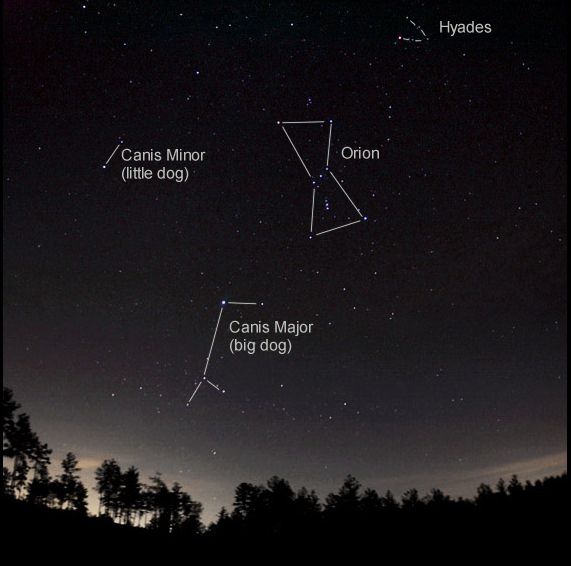
NGC 2508
NGC 2508 is a lenticular galaxy situated at around 75.7 megaparsecs away from us. This galaxy is hard to observe since the field of view is close to the Sun. It has an apparent magnitude of 10.285.
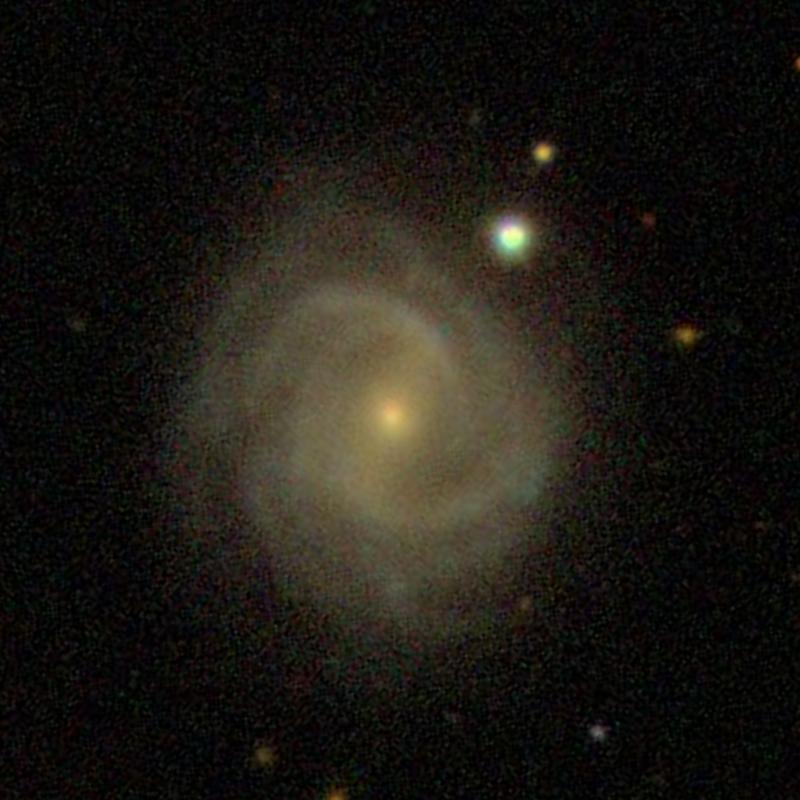
Nebula Abell 24
The Abell 24 Nebula is a faint planetary nebula located at around 1,730 light-years away. It stretches out for around 6 arcminutes, and it was discovered by astronomer George Abell.
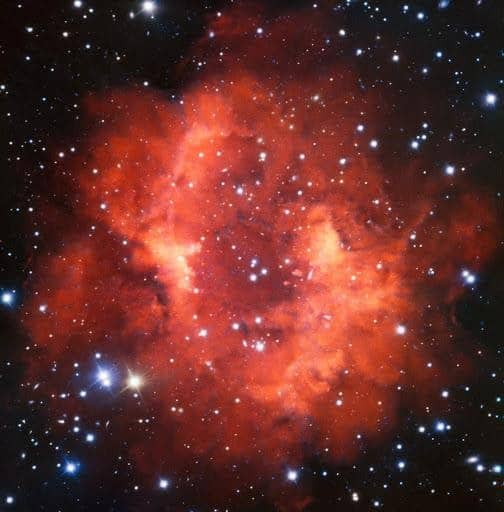
Meteor Showers
There is only one meteor shower associated with Canis Minor, the 11 Canis Minorids also called the Beta Canis Minorids.
The 11 Canis Minorids meteor shower peaks around 10 and 11 of December, and they last from 4 to 15 December.
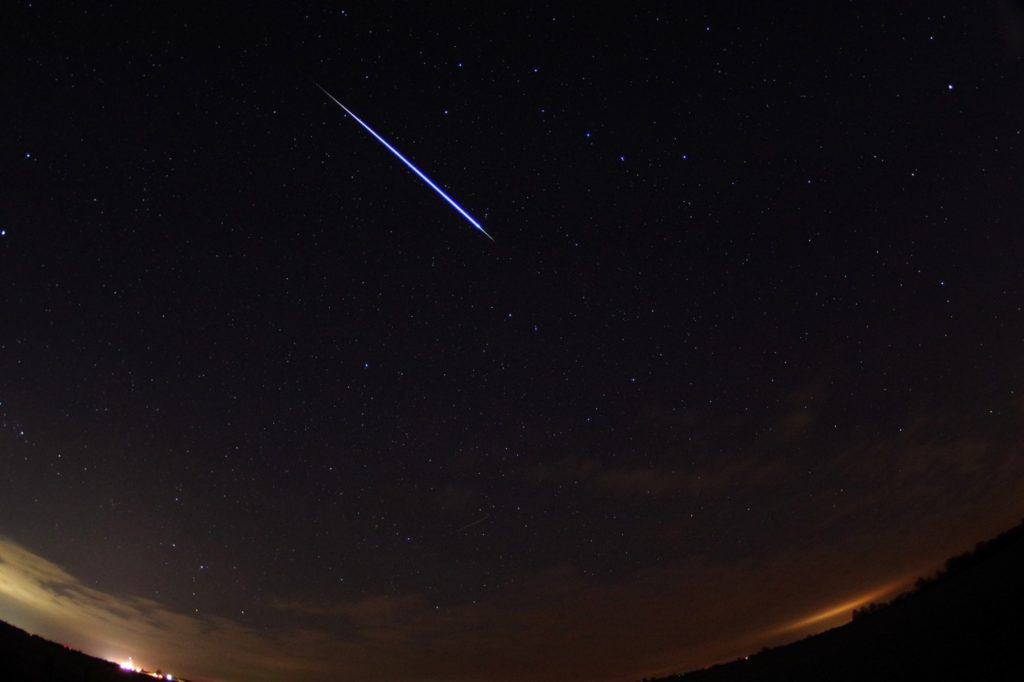
Did you know?
- The ancient Egyptians associated Canis Minor with Anubis, the jackal god
- Johann Bayer proposed alternative names for this constellation, such as Fovea – the Pit, and Morus – Sycamine Tree.
- Sometimes, Canis Minor is confused with Canis Major and it is named Canis Orionis – Orion’s Dog.
- In Chinese astronomy, the stars that belong to Canis Minor lie in the Vermillion Bird of the South.
- The Polynesians didn’t recognize Canis Minor as a constellation, however, they named Procyon as Hiro, meaning “twist as a thread of coconut fiber”.
- The Aztec calendar was related to their cosmology, with the stars of Canis Minor being incorporated along with some stars of Orion and Gemini, that formed an asterism associated with the day called Water.
Sources:
Image Sources:
- https://www.astronomytrek.com/wp-content/uploads/2015/04/Midnight-south.jpg
- https://upload.wikimedia.org/wikipedia/commons/9/9e/Cmi.jpg
- https://i.pinimg.com/originals/be/4c/7c/be4c7c70e3ef59954733720e26c9524e.jpg
- https://cdn.spacetelescope.org/archives/images/screen/heic0516d.jpg
- https://viewfrom.earth/media/k2/items/cache/184b7cb84d7b456c96a0bdfbbeaa5f14_XL.jpg
- https://lh3.googleusercontent.com/proxy/snYdAkfs0l-JsOB6fgHyGXP4-cHakd6jQIypGEgRaLyGlbP4NQH0H1akxOSPOtMKoFlx6yMAa_UzUc13ByacHpRRLK1HU597R3EMjrvr-tHlWDqEdx9zABcY3jAT-g
- https://www.star-facts.com/wp-content/uploads/2019/09/Procyon.jpg?189db0&189db0
- https://theskylive.com/sky/stars/finder-charts/gamma-canis-minoris-finder-chart.png?c=1586751979
- https://www.slashgear.com/wp-content/uploads/2019/06/teegarden-habit-zone.jpg
- https://i.kinja-img.com/gawker-media/image/upload/t_original/cfwx3b8spzen95qzmqvc.jpg
- https://theskylive.com/sky/stars/star-images/28/2828_800.jpg
- https://alchetron.com/cdn/beta-canis-minoris-c35ea131-7cbe-4b83-83e5-84f8abcea98-resize-750.jpeg
- https://upload.wikimedia.org/wikipedia/commons/thumb/0/06/Wezen.jpg/240px-Wezen.jpg
- https://upload.wikimedia.org/wikipedia/commons/a/ae/Eta_CMa.jpg
- https://upload.wikimedia.org/wikipedia/commons/thumb/6/67/Canis_Minor_2019-12-31_1.jpg/300px-Canis_Minor_2019-12-31_1.jpg
- https://lh3.googleusercontent.com/proxy/djRoNTI7w0AreQEgTH6gWDR-y3YBWIX_EnzAt9RFTRhved28hsPajrItAq-RFHkG4Q8aG7iOH9wtmzaS_mEypOqQvmyDTg
- https://skyandtelescope.org/wp-content/uploads/Carbon-R-Leporis-Brimacombe_V2.jpg
- https://www.universetoday.com/wp-content/uploads/2008/10/cmsky_cortner_lab.jpg
- https://upload.wikimedia.org/wikipedia/commons/b/b4/NGC_2503.jpg
- https://lh3.googleusercontent.com/proxy/pikCHGEdxGyLJuzwPdxtz31UPgJaBbyh9SZEYVEgCRR-5BFSq9e50DUwUOUDRY-fPpSTzi5ZKsBWZMhMGZ0DyeXlnzdgEDZiNfoPITUx621AB0uQlyGgFw
- https://www.amsmeteors.org/wp-content/uploads/2017/12/John-Hacker.jpg
